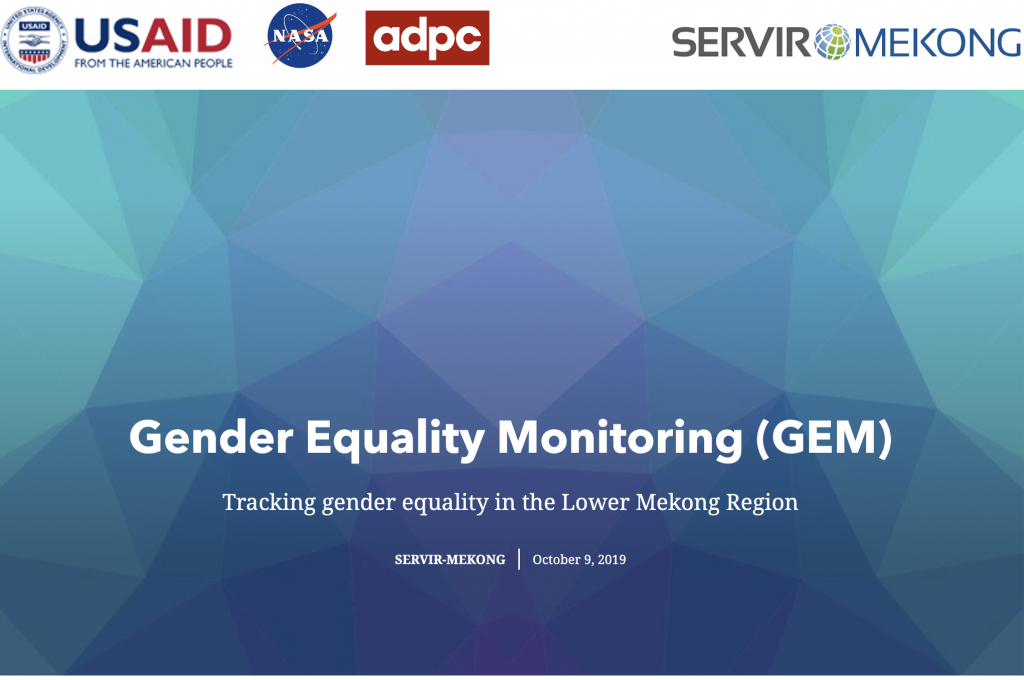SERVIR-Mekong Empowers Women and Promotes Gender Equality through the Power of Geospatial Technology

Geographic Information System (GIS) is a powerful tool that allows international development agencies to analyze large and complex spatial datasets in sophisticated ways to achieve development outcomes. Over the last few years, GIS use as a tool to study complex social variables, including gender, continues to increase. Gender issues and gender-related data have a critical role in the use of GIS for improved, gender-informed decision making.
Integrating GIS with gender has several benefits. First, it places “people on the map” thus allowing this critical component to be explored alongside the other datasets. Second, placing “people on the map” allows for analyzing gender differentiated impacts and implications of environmental change on the population. Third, it allows for analysing information at large scales. While there are in-depth studies on gender in natural resource management, this information is not available for large geographic areas and is not spatially synthesized.
Accessing gender statistics are critical to examine and track changes in gender inequality. However, in the Lower Mekong Region, gender statistics such as Gender Inequality Index (GII) and Sustainable Development Goals (SDGs) indicators are only available at national level, and there is a lack of sub-national sex disaggregated data. This makes it difficult to examine multiple aspects of gender inequality and to track the performance of promoting gender equality within countries.
At SERVIR-Mekong, gender integration into geospatial services remains a high priority. SERVIR-Mekong is working on refining its Gender Equality Monitoring (GEM) tool. The program is also supporting USAID women’s economic empowerment funding Initiative by using the GEM tool for visualizing gender inequality in the Lower Mekong.
SERVIR-Mekong’s Gender Equality Monitoring (GEM) platform was developed to offer officially published data and periodically updated sex disaggregated data repository for public use. It also helps to visualize gender inequality at sub-national level, including gender inequality index (GII), and gender gaps in various sectors such as education, health, employment, household decision-making etc.—a starting point to further explore the causes and more complex dynamics of gender inequality.
GEM can be customized to meet the user’s needs, i.e., adding available datasets they wish to incorporate into the platform. Depending on the availability of data over time, the platform could also be used to visualize demographic changes in gender.
GEM has several use cases. The platform can be used by gender advocates, policymakers, researchers, and development practitioners to:
- Understand sub-national dynamics that contribute to gender inequality
- Establish baseline data for tracking gender inequality
- Identify gender gaps in sectors at the district, commune and village levels and
- Increase inter-ministerial cooperation on data collection, data sharing, gender analysis, and gender-responsive planning
To learn more about the Gender Equality Monitoring (GEM) Platform and access available tools click here.
A regional workshop to present the tool to regional stakeholders is planned for 2021. Watch this space for more information.
Note: Gender is not just a “women-only” issue. Both women and men can be affected by their ascribed gender roles and expectations in the public and private spheres (Trocaire 2010).



